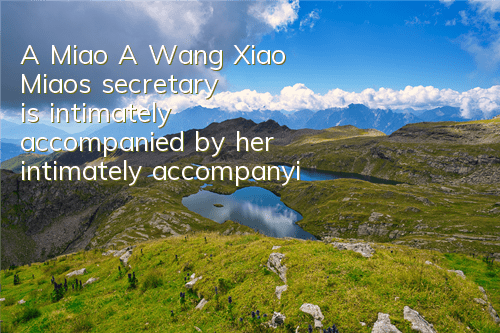In March this year, Midea Group signed an equity transfer agreement with Toshiba Japan, planning to acquire 80.1% of the equity of Toshiba’s home appliance business, the main body of Toshiba’s home appliance business. The reporter confirmed from Midea Group today that the equity transfer and delivery procedures for this transaction were completed on June 30.
Midea officially completed the acquisition of 80.1% of Toshiba Home Appliances
Midea Group introduced the details of the transaction through a written response. As of the "Delivery Day" on June 30, 2016, the US has completed all necessary procedures including approval of Japan Fair Trade Commission, the Japanese antitrust regulator, and filing of the National Development and Reform Commission of China; and the entire transaction price has been paid by the company to Toshiba and related entities, with a total amount of approximately 51.4 billion yen, equivalent to approximately 3.3 billion yuan, which is slightly lower than the initial estimate of 53.7 billion yen.
After the transaction is completed, Midea will hold 80.1% of Toshiba Home Appliances through its holding subsidiary Midea International Holdings Co., Ltd. At the same time, Midea will also obtain 40 years of global license to the Toshiba brand and more than 5,000 patents related to white goods. In addition, according to the initial agreement, Midea needs to undertake a debt of about 25 billion yen to Toshiba's home appliances after the acquisition, but Midea has not announced the exact amount of debt after the delivery.
Ji Min, chief analyst of the home appliance industry of China Merchants Securities:On the one hand, it can easily obtain overseas markets and brands more directly, and in addition, it can master some relatively advanced technologies, such as some Toshiba's technologies, and in Midea's ice and wash, it can obtain some development and application of high-end products.
It is understood that after the transaction is completed, Toshiba Home Appliances will continue to develop, manufacture and sell Toshiba brand white goods products, such as refrigerators, washing machines, and other small home appliances products. Since 2012, Toshiba has been in a quagmire of losses. In the fiscal year 2015, Toshiba recorded an operating profit loss of 719.1 billion yen, or about 46 billion yuan, of which the operating loss of the home appliance business was as high as 150.5 billion yen, or about 9.7 billion yuan.
News link: Midea launches three consecutive overseas "three-month"
Including the acquisition of Toshiba, Midea Group Co., Ltd. has launched three overseas mergers and acquisitions in the past three months. Midea has become the most active local home appliance company for overseas mergers and acquisitions. What is the reason behind such positive actions?
On June 29, Midea announced that it had signed a share acquisition agreement with German robotics company Kuka. On June 24, Midea also announced that it had obtained 80% of the equity of Italian central air conditioning company Clivet. Behind the frequent overseas mergers and acquisitions is the increasing revenue contribution of the overseas market.According to the 2015 financial report, Midea's revenue was 138.4 billion yuan, and its product export revenue accounted for about 40% of its overall revenue. Compared with the year-on-year decline in domestic market revenue, overseas markets are extremely stable. Industry insiders believe that after completing the acquisition of Toshiba, Midea products will be able to enter Japan, the home appliance market with the highest threshold in the world, and its exports of its own brands will also rise.
Ji Min, chief analyst of the home appliance industry of China Merchants Securities:For example, Toshiba mainly sells in Japan and Southeast Asia. Midea can enter the Japanese and Southeast Asian markets through the Toshiba brand and expand Toshiba's original categories. The internationalization of Chinese companies has already taken this path.
It is understood that Midea Group previously stated that Midea will set up an international headquarters to coordinate the planning of its own brand overseas business, and at the same time promote Midea's export business to supporting China's exports to supporting local operations. Experts analyzed that this not only means that the Midea accelerates its international layout, but also reflects the trend of China's home appliances seeking international development.
Ji Min, chief analyst of the home appliance industry of China Merchants Securities:The home appliance industry is China's most competitive industry in the world. For Chinese home appliance brands, the overseas market has always been a place where they hope to achieve sales and improve themselves through independent brands. Therefore, after the domestic market has become relatively mature and the strength of home appliance companies has developed to a certain state, overseas mergers and acquisitions are also a natural thing.
Toshiba sells white goods business to avoid insolvency
Is it Toshiba’s helpless move or the beginning of Toshiba’s transformation for sale? What is the prospect of the white goods industry, including the Japanese market?
Financial Channel Special Commentator Jin Jianmin:Since Toshiba broke out the accounting fraud scandal in early April 2015, customers fled, employees' morale fell, resulting in a decline in sales; coupled with the reduction in benefits brought by fraud, the losses were huge. The shareholder capital ratio (shareholder equity ratio) quickly fell from 17.1% at the end of March 2015 to about 5% at the end of December 2015. If you do not sell your assets and increase your own capital, you will face the risk of bankruptcy. Rapidly sell profitable assets: medical business (about US$6.6 billion), avoiding the exhaustion of "insolvent" in the final accounts of March 2016. The shareholders' capital ratio must be maintained at the level of 5.8%. Although there is a lot of opposition inside and outside the company, there is no choice between life and death.
Selling white goods to Midea has the need for financial restructuring and business restructuring. But judging from the sale price, it can be said that business restructuring is the highlight. Although Toshiba still has certain brand and technological advantages in the field of white goods, the global market growth is weak (about 5% growth rate, but there is a large stock market.and the cost is high, and its competitiveness in the global market is no longer as good as that of its Asian competitors. With the decline of the domestic population in Japan, the white appliance market cannot expect an incremental market, and it also faces competition from a large number of innovative companies (there are currently 34 white appliance companies in Japan). Therefore, the field of white goods is difficult.
With Midea's price competitiveness, it can revitalize existing assets (including technical assets), and at the same time increase the supply of components, etc. Toshiba retains a capital contribution of about 20% to obtain fruit from Midea's business development.
After Toshiba completes this round of asset and business restructuring, it has basically no B2C business. After retreating to B2B, it mainly focused on three fields: "energy", "social infrastructure" and "semiconductor components". Toshiba does not give up Westinghouse's nuclear energy business, may also have Japanese countries that need to deal with nuclear power generation and other needs. Since the innovation activities of large Japanese electronic companies are closed and slow, it is reasonable to withdraw from the B2C field. The B2B field requires long-term technical accumulation and safety/stability guarantee, so Japanese heavy power companies can still maintain certain advantages. However, if the speed of innovation is not increased and global business capabilities are increased, this advantage may be difficult to maintain continuously.









